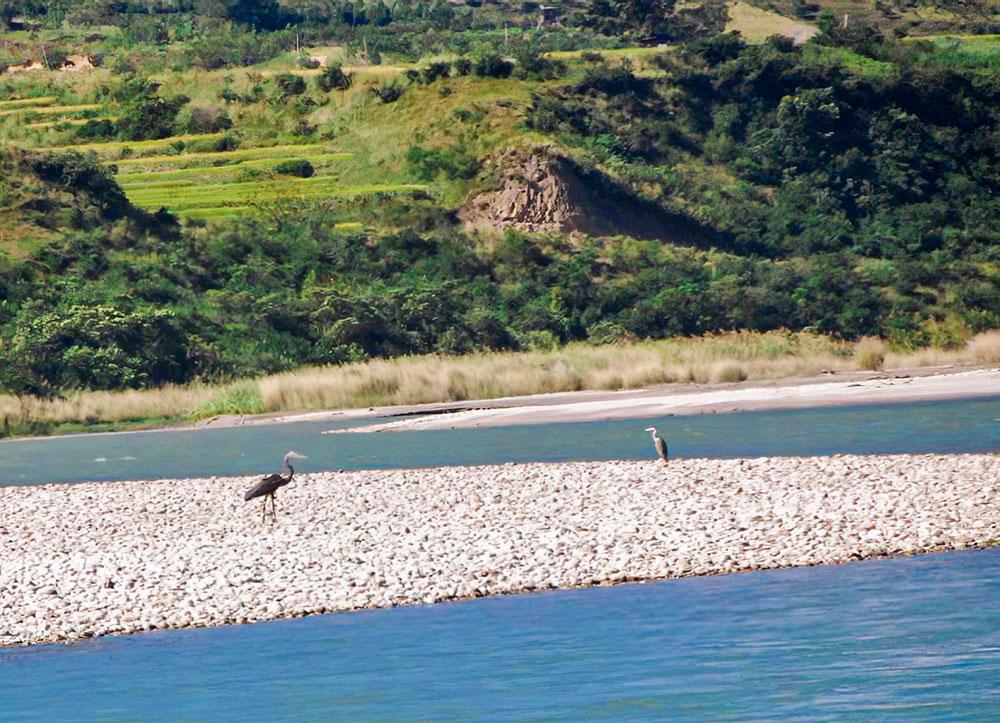Chhimi Dema
A white-bellied heron (Ardea insignis) was sighted recently along Phochhu and Mochhu after three years of its absence in the areas. White-belled heron (WBH) is a rare and critically endangered species with a global population of only 60 birds.
The Royal Society of Protection for Nature (RSPN), the organisation working towards conserving WBH in the country, recorded 23 WB herons last year.
Officials from RSPN said that as there were no WBH nests in Phochhu and Mochhu, the juvenile WBH could have come from the nest along Harachhu.
WBH do not migrate but disperse seasonally or move because of disturbances or threats in their habitat areas.
WBH was sighted in the Pho chhu and Mo chhu areas during spring, autumn, and winter. Phochhu and Mochhu areas had eight birds between 2007 and 2008.
An official from RSPN said that WBH could have avoided Phochhu and Mochhu areas because of disturbances with the increasing number of hotels, illegal activities and riverside recreational activities, among others.
Another reason for not sighting the bird in that area, the officials said, is the hydropower construction between Punatsangchhu and Harachhu. “The hydropower construction activity could have stopped the birds from moving from Tsirang and Dagana nests to Phochhu and Mochhu areas.”
However, officials observed that the bird returns once the developmental activities are over.
RSPN officials said that as the bird sighted at Phochhu and Mochhu today is a juvenile, it might return to the area considering the philopatry feature of animals. Philopatry is the tendency of an organism to stay in or habitually return to a particular area.
RSPN officials said that to conserve WBH or any other species, communities’ support is the most essential.
This year, RSPN is supporting communities of Wangdue, Tsirang, Dagana, Punakha, Zhemgang and Trongsa located in the WBH habitat with agriculture activities worth USD 140,000.
Officials said that this support was to improve the livelihood of the communities so that their dependency on natural resources is reduced and the biodiversity habitats are protected.
The community is involved in the conservation of the bird through the local conservation support groups in which an individual from the area monitors the sighting of WBH. The individual can enter the data and provide real-time information on the bird.
Currently, 27 farmers are engaged in recording and monitoring WBH’s sightings. RSPN pays a nominal fee every six months to those farmers.
The locals from the WBH habitat also work with RSPN to carry out habitat inventory, awareness and surveys.


